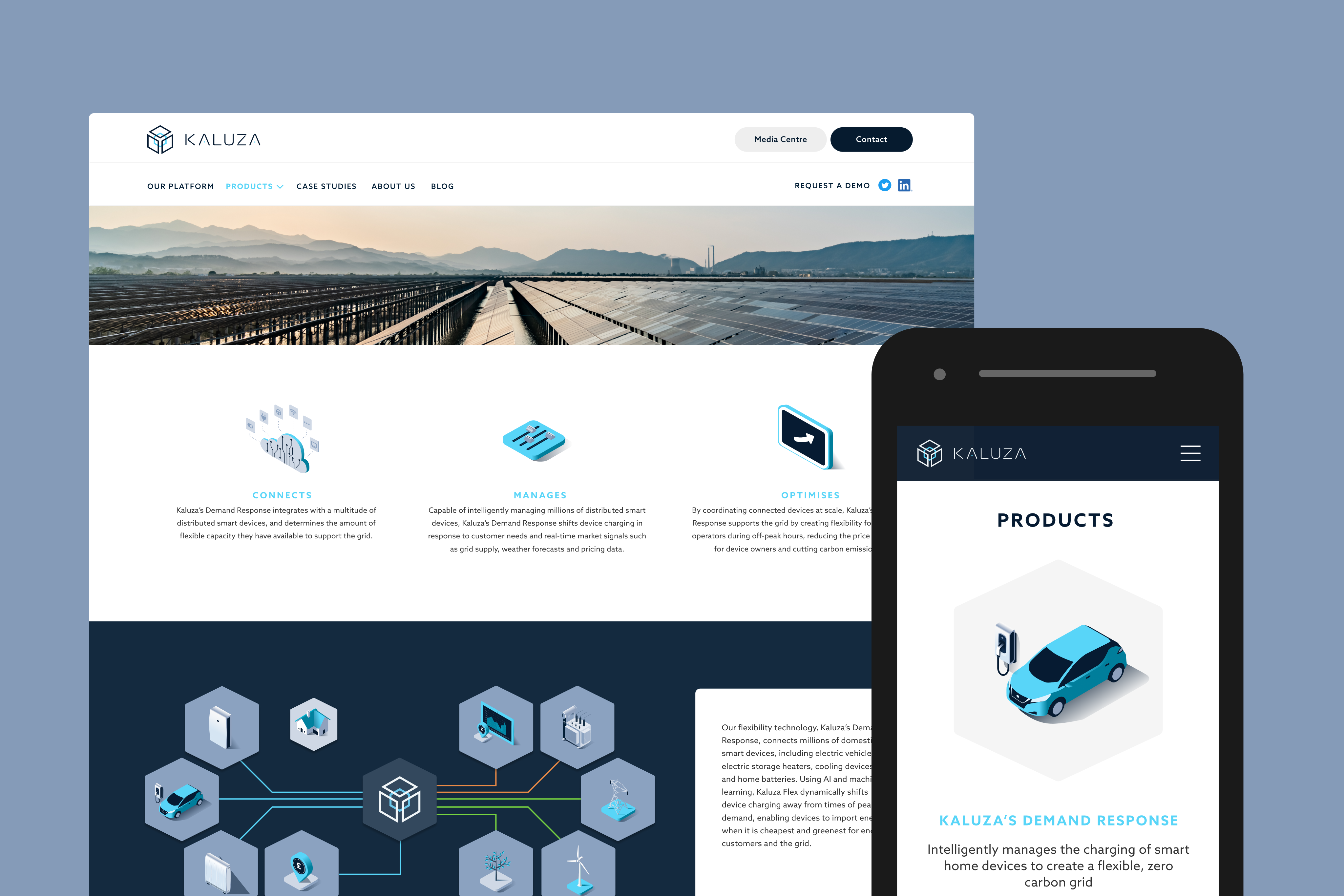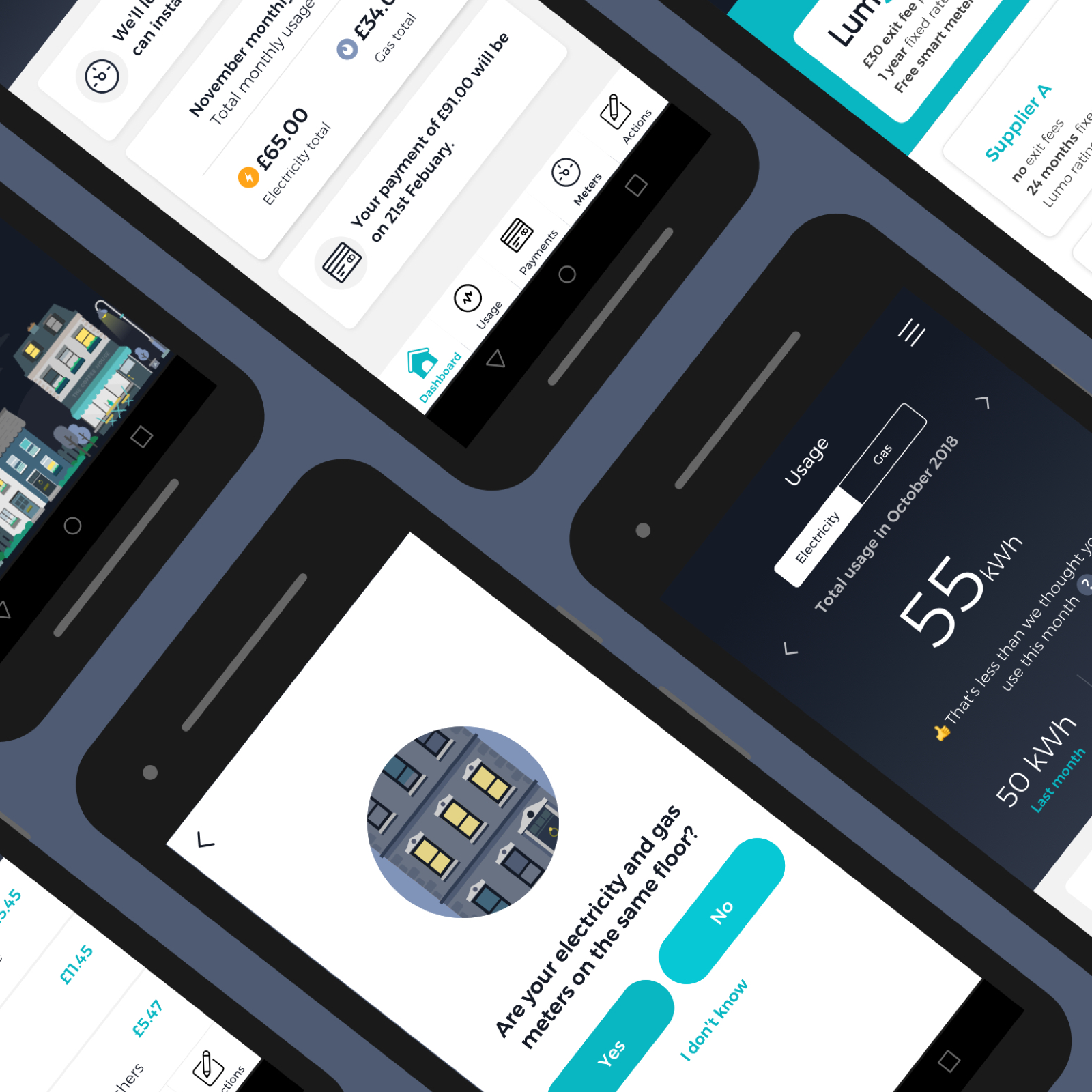Building a Platform Brand
Kaluza is the intelligent energy platform enabling the world’s largest energy companies to lead the way in the energy transition. As design lead of the brand and paternisation practice I'm responsible for creating, implementing and delivering our brand strategy and initiatives across our internal and external products and services.
Live Piece, Nov 2020 – presentWhat is the brand practice
The brand practice is a fundamental part of the Platform Design team and is one pillar of the platform ecosystem. Operating as a centralised model, the brand practice provides specialist brand expertise and support to product teams and stakeholders across Kaluza. We work alongside User Research & Service Design practices and collaborate frequently with Content Design, Design Operations & Product Design.
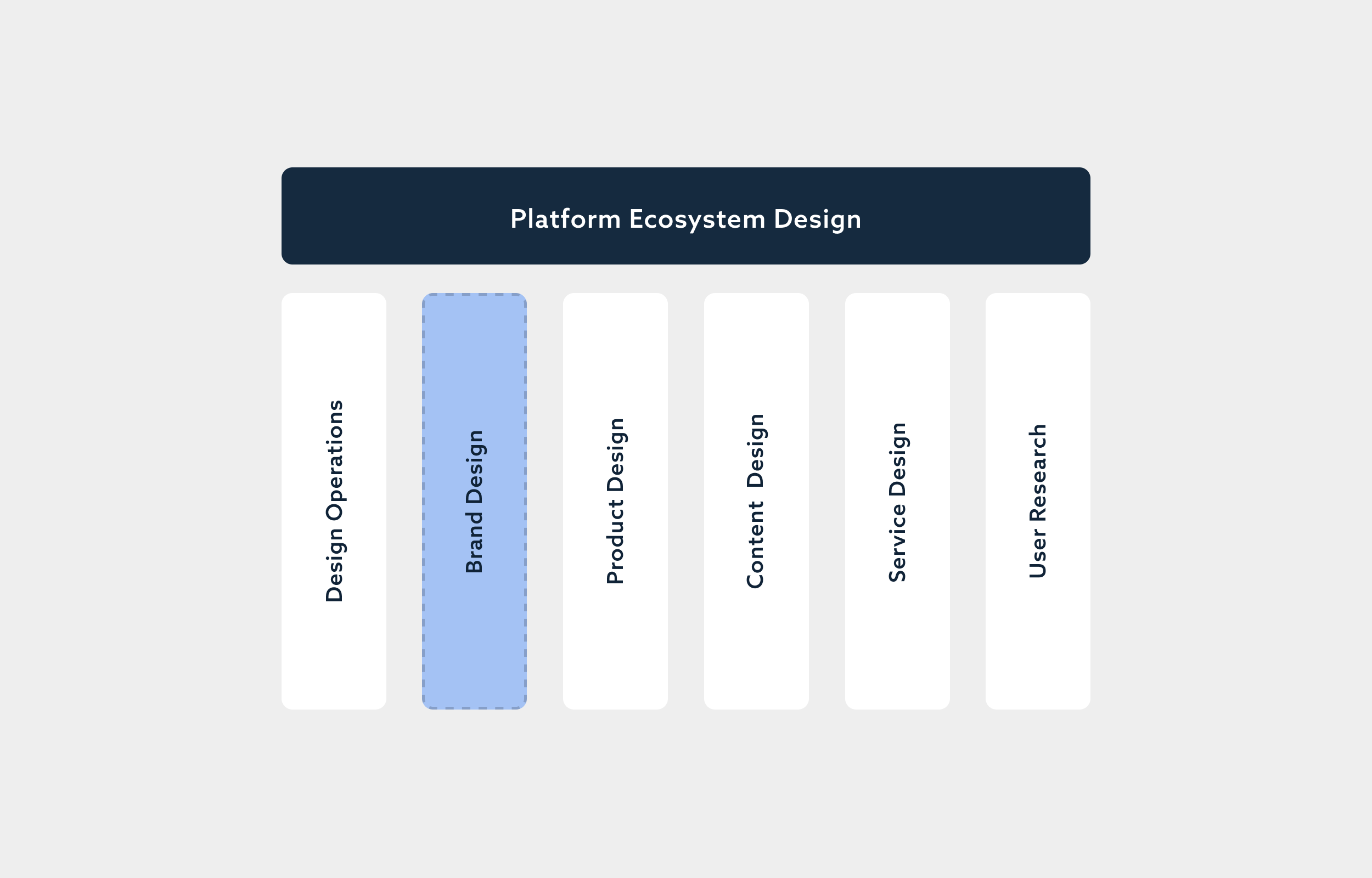
The practice is responsible for
- Bringing the brand essence to the digital assets: look and feel, tone of voice, ux copy, iconography.
- Maintaining visual consistency across our platform, aligning across all areas, from our external facing website right through to the UI components of our design system.
- Expanding our visual assets, across web and print.
- Creating efficient tools and frameworks to facilitate self-serve and increase brand adoption.
- Increasing brand awareness internally and externally.
Kaluza operates as a B2B business, and so we know it’s important that our brand strategy meets the needs of our partners, clients and internal platform shapers. Traditionally brand and marketing teams have partnered to capture the audience of consumers. However as a modern platform, Kaluza needed to attract and maintain entities and for that we required a strong brand experience that exists across all elements of a platform. Our users need consistency of language, look and feel and UX to learn faster and feel safer in their work environment, and failing to do so could see a reduction in acquisition, retention, loyalty and trust. According to a recent study by ProfitWell, willingness to pay increases by 25% if a user has a positive affinity for the brand and the design of a product and service.
The brand practice drives the structure and direction of the brand across Kaluza - from our visual identity to our tone of voice. All brand initiatives and goals level up to the wider company OKRs and so alignment across marketing and platform branding is key.
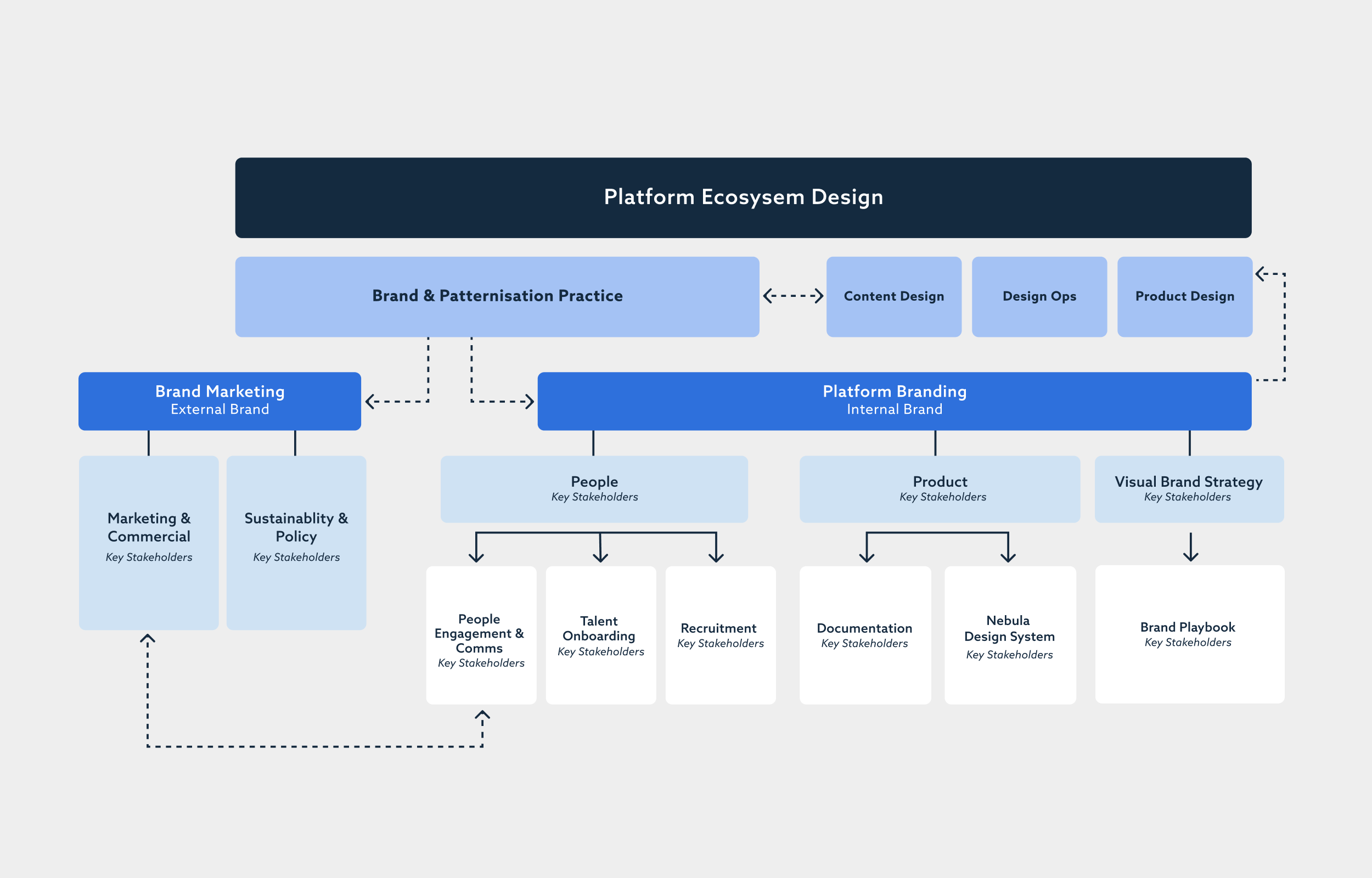
Brand Marketing vs Platform Branding
In order for Kaluza’s brand to scale efficiently across our increasing product catalogue we knew that brand should adopt a dual approach, split across two avenues. We defined each avenue as:
Brand essence
Defining our brand mission, who we are and what we represent.
Brand execution
Creating our visual identity, providing expert guidance to all embedded designers and product practices to deliver the brand mission.
Establishing these two clear avenues allows us to deliver brand support across our external products from a marketing lens whilst maintaining brand consistency across our entire platform right down to the visual identity of internal documentation sites.
Our brand strategy was to create a holistic brand experience where all users feel connected to the Kaluza brand no matter where they sit in the wider platform ecosystem. We did this by splitting the way we approach brand at Kaluza into Brand marketing - serving our external brand relationships and Platform branding - delivering visual consistency of the brand into our internal documentation, tools and UI.
Brand marketing
Brand marketing is the process of establishing and growing a relationship between a brand and consumers. Rather than highlighting an individual product or service, brand marketing promotes the entirety of the brand. An example would be our kaluza.com website.

Platform branding
Platform branding is the development and application of branding strategy principles to the platform experience of products and services. Onboarding with Kaluza, a client will interact with the Kaluza experience of our specific products. An example being our documentation portals - help.kaluza.com and developer.kaluza.com.
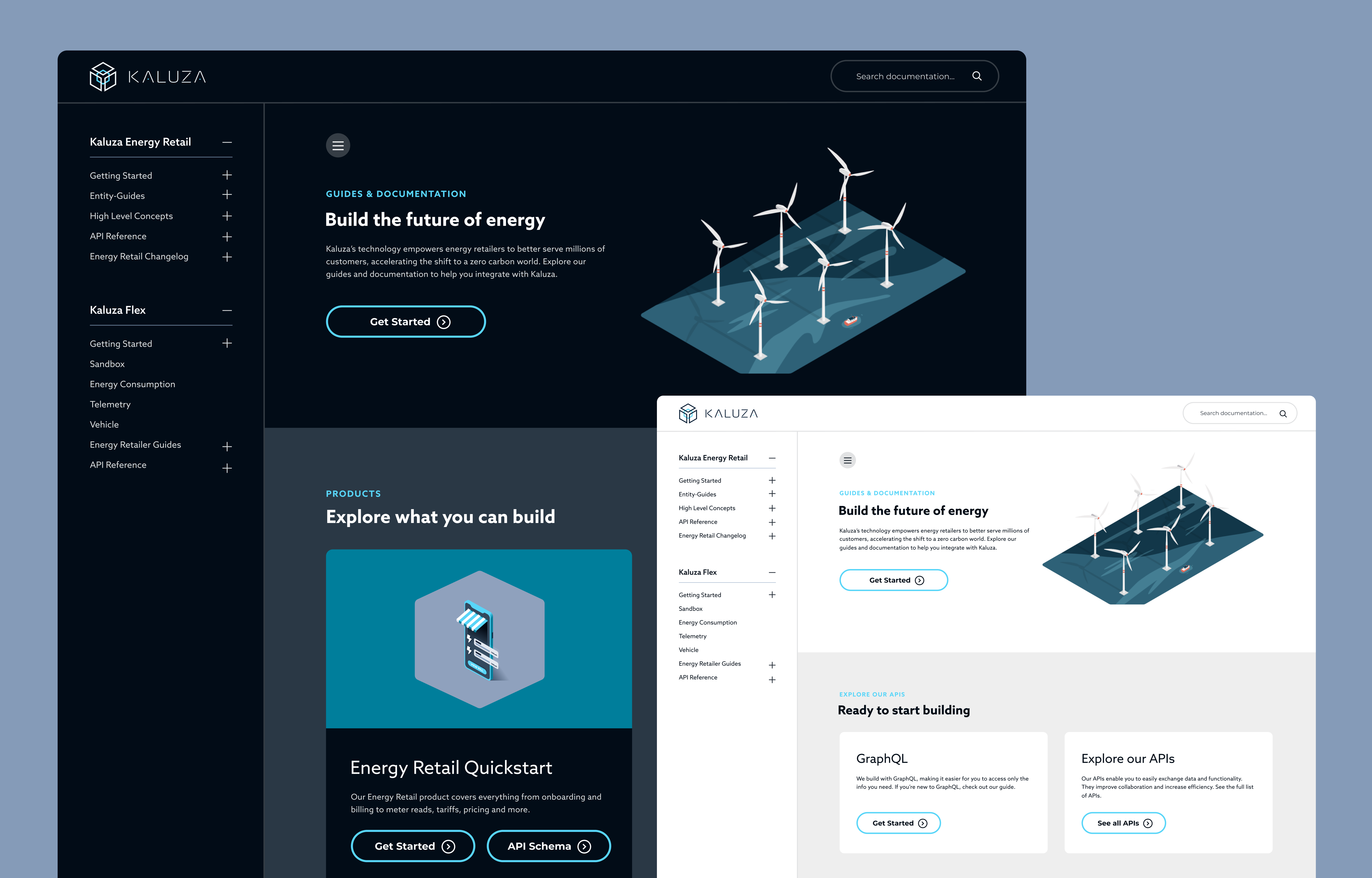
Developing our Brand
A brand pyramid is a representational framework that answers fundamental questions about a brand and marketing positioning. With Kaluza being a new brand entering the market this approach was particularly useful for gaining consensus across the business on what the company wants to be, who it serves, and why. It also allowed us to clarify some of the brand's fundamentals — such as what is the essence of the brand.
The purpose of these interviews would help the brand practice map out the Kaluza brand and establish our visual identity and tone of voice. The information we gathered during the interview would helped us to piece together our brand pyramid.
Brand pyramid interviews
A series of 121 interviews were conducted with all 16 members of the senior leadership team. An informal approach was important in allowing participants to answer freely without the influence of others. During the interviews we asked a series of seven questions:
- What is Kaluza? Describe Kaluza in one sentence?
- What customer problems are we solving, what is the benefit?
- What’s the emotional value of our product? How should the customer feel after using our product?
- What are Kaluza’s core values? How would you describe Kaluza as a person?
- What’s the essence of Kaluza? What’s the core idea we’re trying to communicate?
- What is our mission?
- What is our vision? Where do we see Kaluza in the future?
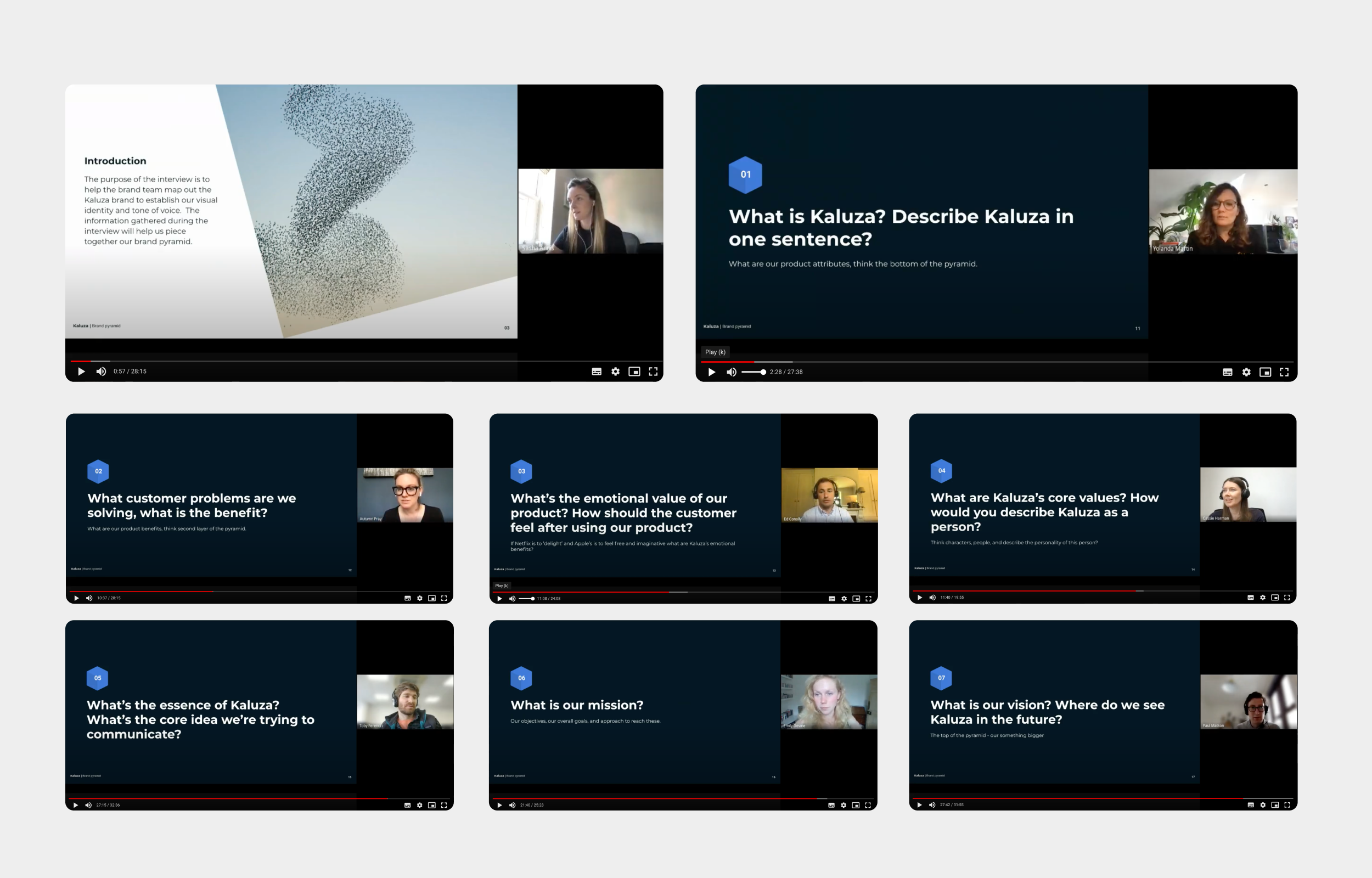
Insights gained
The results gathered during the interviews let us learn more about the problems we are solving as a business - what our product's benefits are and how we might want our customers and clients to feel when using our products. Key insights revealed that collectively we were still describing Kaluza as two separate businesses: our energy retail platform and our flexibility platform. These two entities were dividing the Kaluza brand in two very separate directions. Through a business lens we identify Kaluza as the brand which develops a variety of products and services - similar to Atlassian's brand model, with Jira, Trello ect as products. Our brand vision saw these products encompassing their own identity which would level up to the wider Kaluza brand.
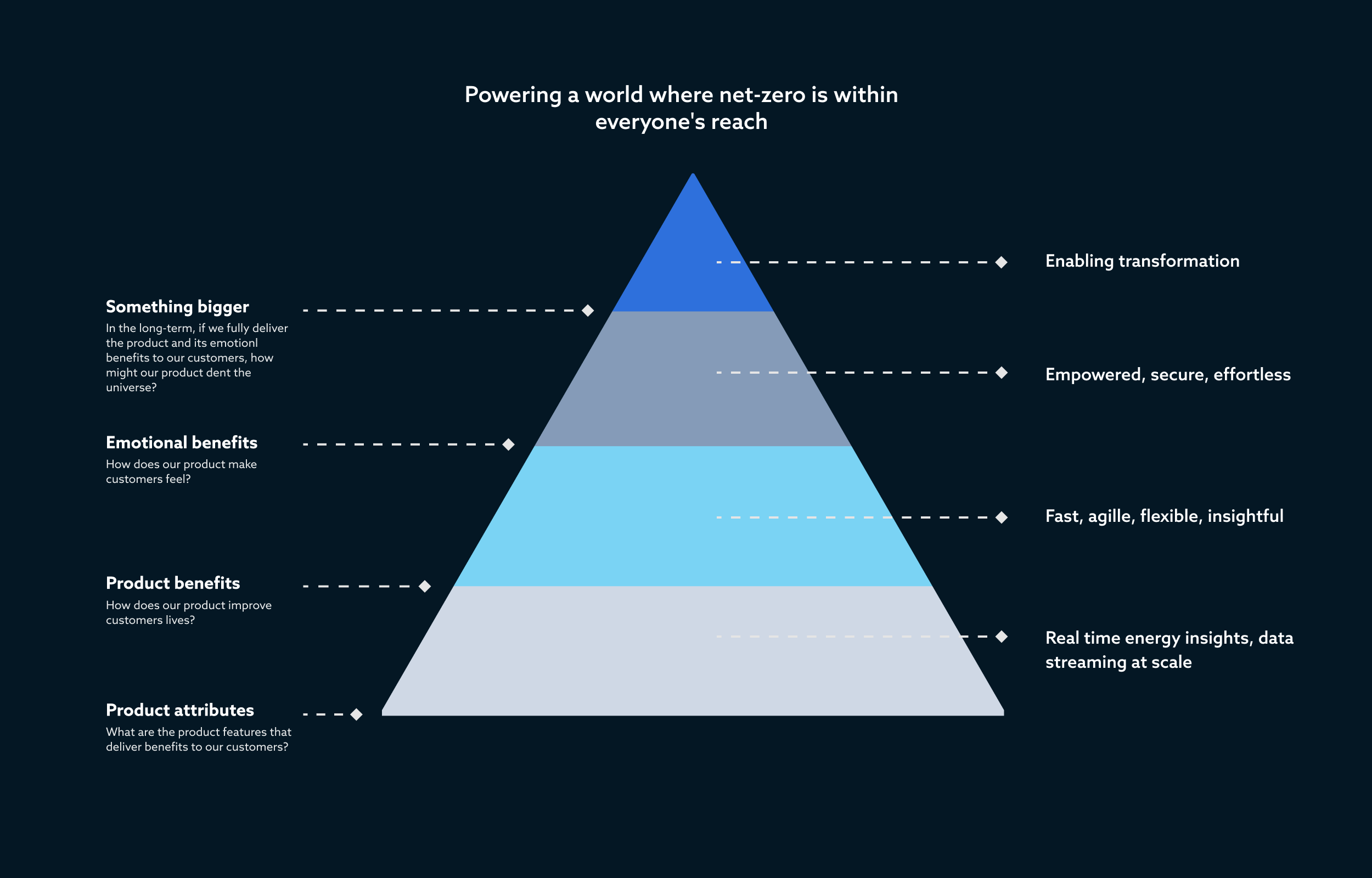
Brand Audit
At Kaluza our very formal visual identity and tone of voice worked well for serving B2B clients. However, results from our brand engagement peakon score revealed a need for a softer internal brand presence - one that our teams could connect and identify with. The brand and content design practices teamed up to create an external and internal brand presence. We identified two channels:
External brand
Delivering brand assets and initiatives for our Marketing Commercial and Policy teams. These teams serve our external facing customers. External brand focuses on how our customers see us, and our presence in the marketplace.
Internal brand
Delivering brand assets and initiatives for our People, Product and Content teams. Internal brand refers to how we see ourselves, how we apply the Kaluza brand to our recruitment processes, products, services and design system. Internally our tone is friendly, we want our platform shapers to connect with and be inspired by what we build together.
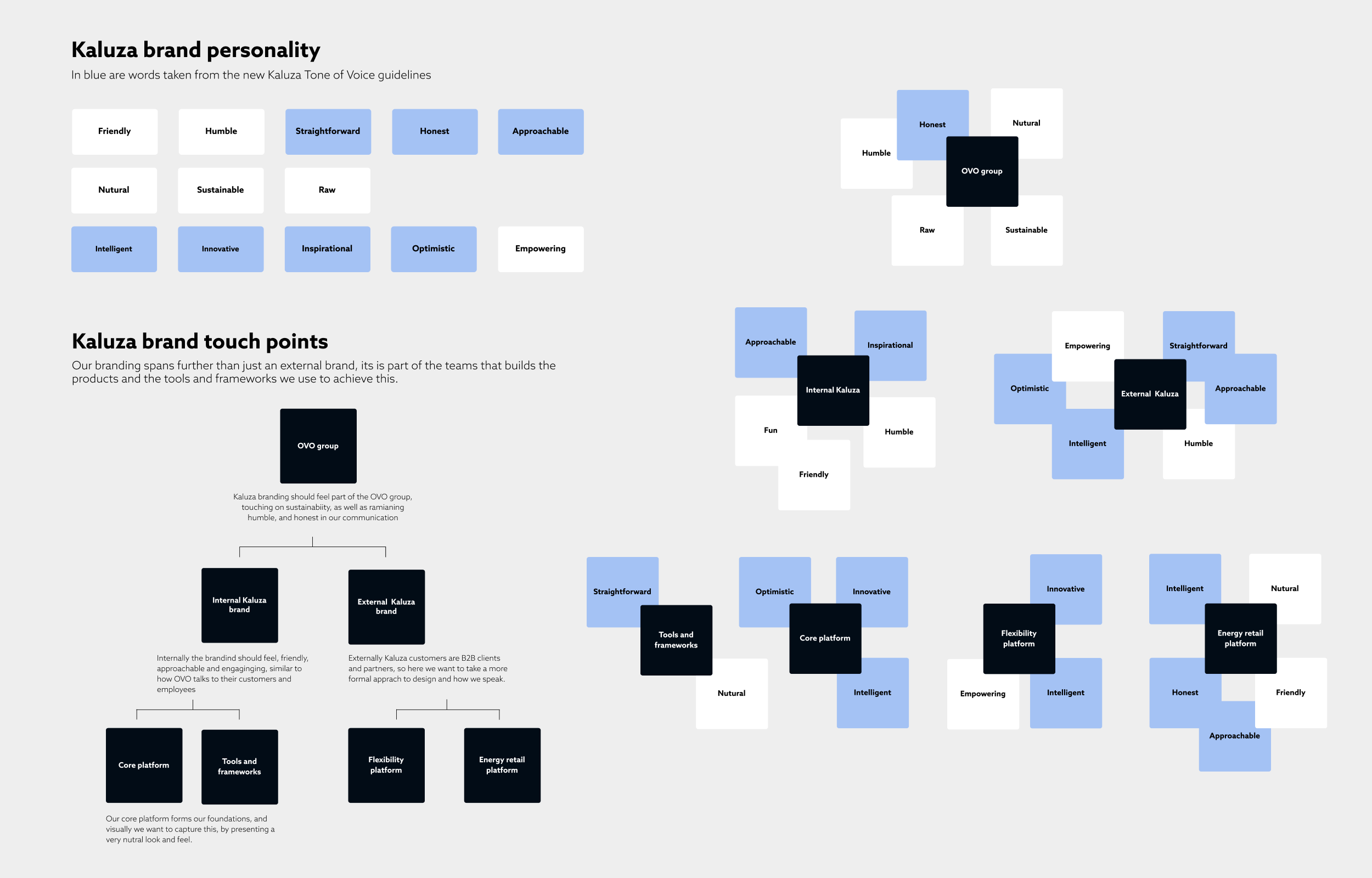
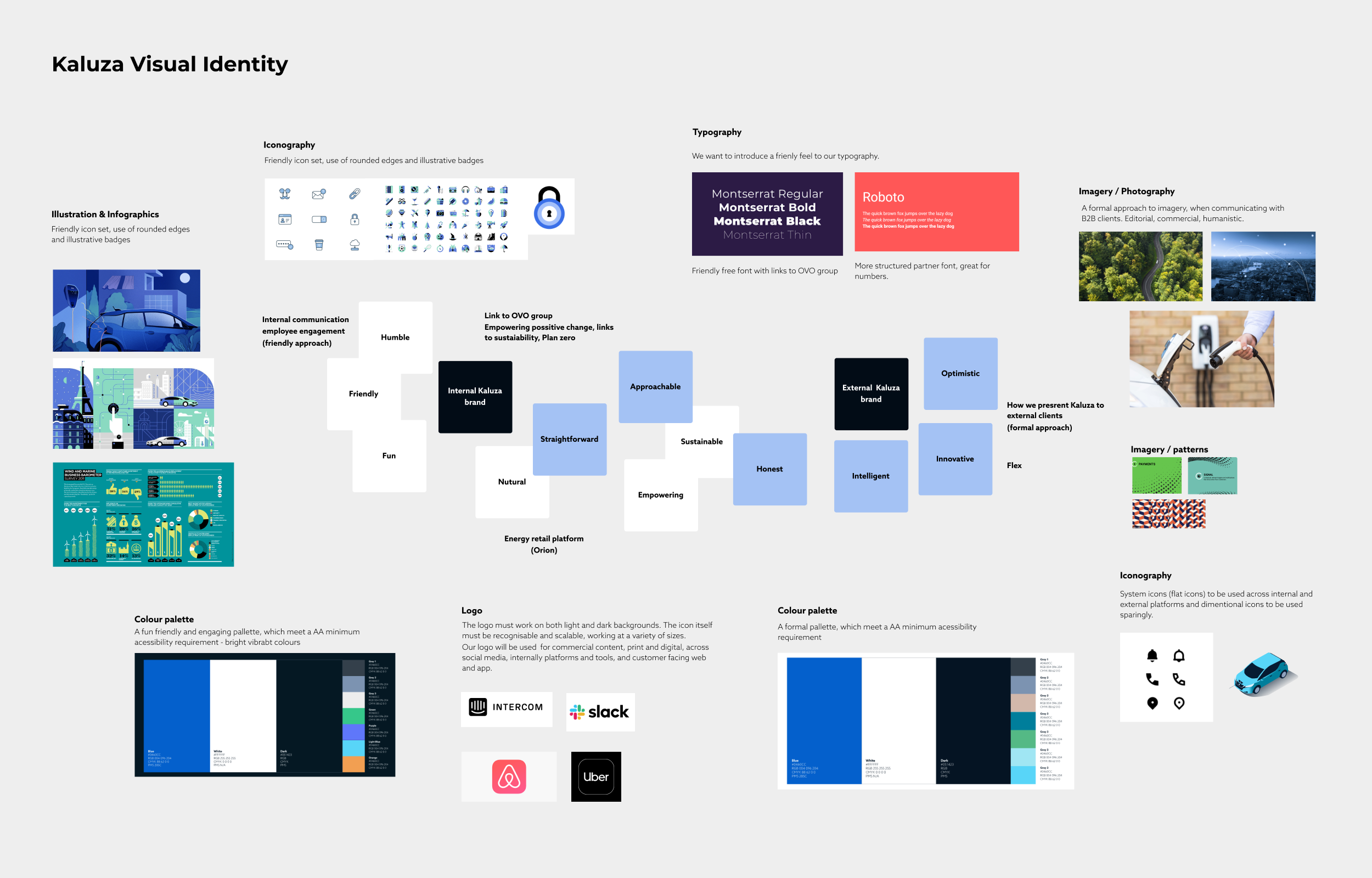
Until recently, Kaluza was part of the OVO group, and so it was important that the Kaluza brand reflected this ongoing connection. OVO’s brand is humble, friendly and approachable as well as capturing the importance of sustainability. We saw this as an opportunity to bring aspects of what was working well at OVO into our internal Kaluza branding.
We achieved this by adding iconography and illustration to the Kaluza brand catalogue of assets and developing an approachable and relatable tone of voice. We applied our internal brand to the newly formed Kaluza careers site as well as internal documentation and new starter boxes.
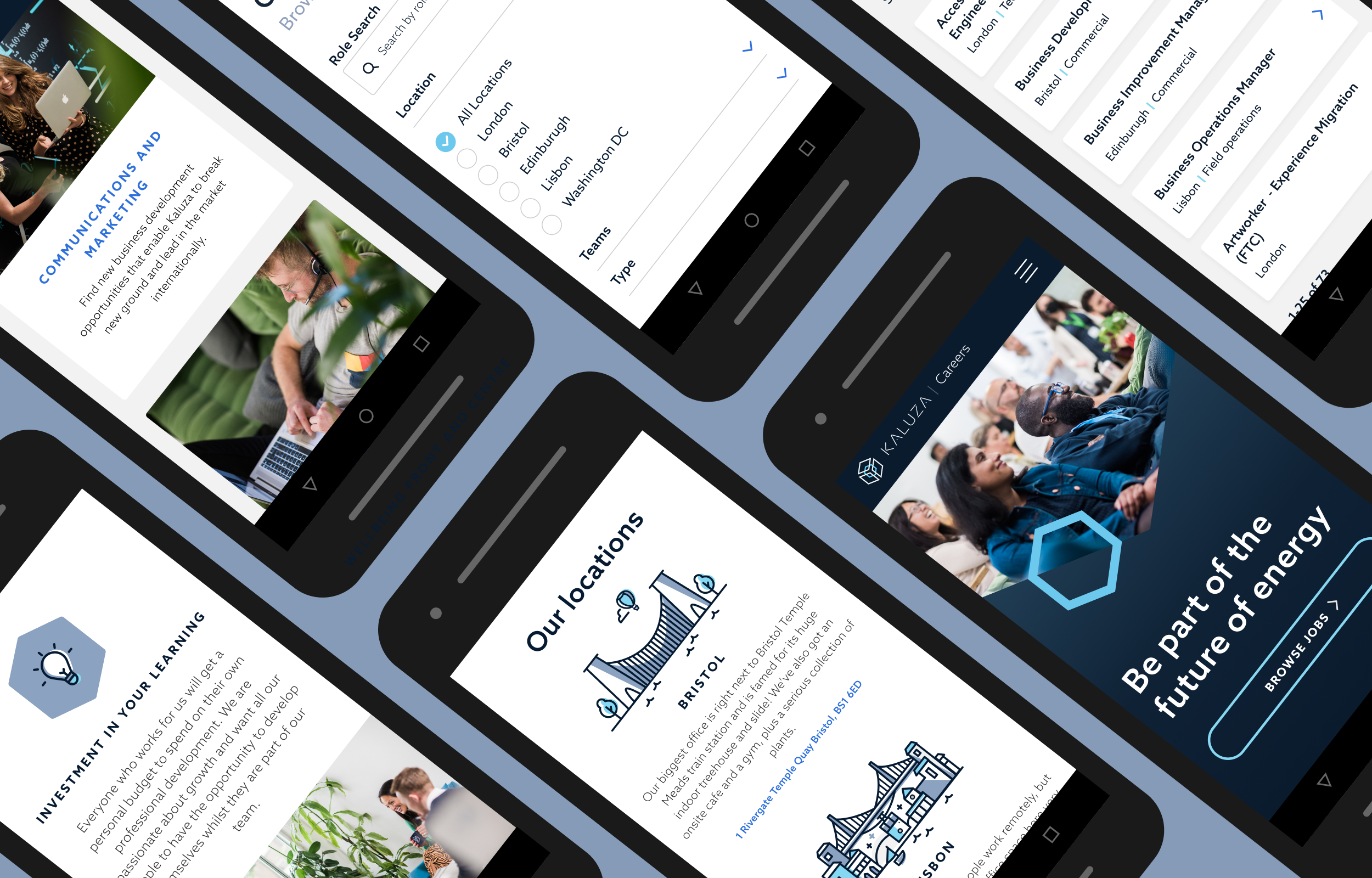

The Brand playbook
Brand adoption
At Kaluza we strive for visual consistency across our platforms. To achieve consistency we need to create tools and frameworks that give everyone access to the most recent assets and brand guidelines. Essentially we aim to create one source of truth that everyone can access and adopt. As a platform brand we believe we are all brand ambassadors, and have the freedom to contribute towards Kaluza’s growing brand - just like you would with a design system.
An ongoing problem we faced as a brand practice was access to our brand assets, these were embedded within many drive folders, with no clear indication where to find them and if they were up to date. This resulted in daily requests for help in locating assets and gaining insights on how best to use these within projects.
Improvements to any of our brand systems needed a clearly defined set of metrics that would prove value to the wider business. As a platform design team each practice was responsive for initiatives that would level up to the wider business OKR’s. For example:
Kaluza Driver
Unmatched customer-centric service driving lower cost to serve.
OKR
Facilitate brand adoption across Kaluza and enable self serve.
- Create a publicly available online visual brand playbook.
- Creation and adoption of visual design frameworks and resources to establish best practice.
KPI
- 90% of brand requests and asset downloads via online brand platforms - downloads measured via google analytics.
- Increase Peakon brand identity and engagement score from 6.8 to > 7.5.
It was a necessity to reduce our daily requests - by creating a solution whereby all requests would go through one single channel. We wanted to give everyone the power to self-serve, and we did this by creating the brand playbook.
The brand playbook is an online library of all band assets. Here a user will find everything they need to bring the Kaluza brand to life. From our brand strategy to our visual identity and tone of voice - it’s the blueprint for applying the brand across all designs at Kaluza.
The brand playbook gives users...
- Easy access to brand assets such as logos, typography, imagery, colour, iconography, templates, style guides and brand guidelines.
- Information about the kaluza brand story and guides on best practice.
- The ability to request new brand assets, via our online form.
- Options to submit feedback on future improvements to the playbook.
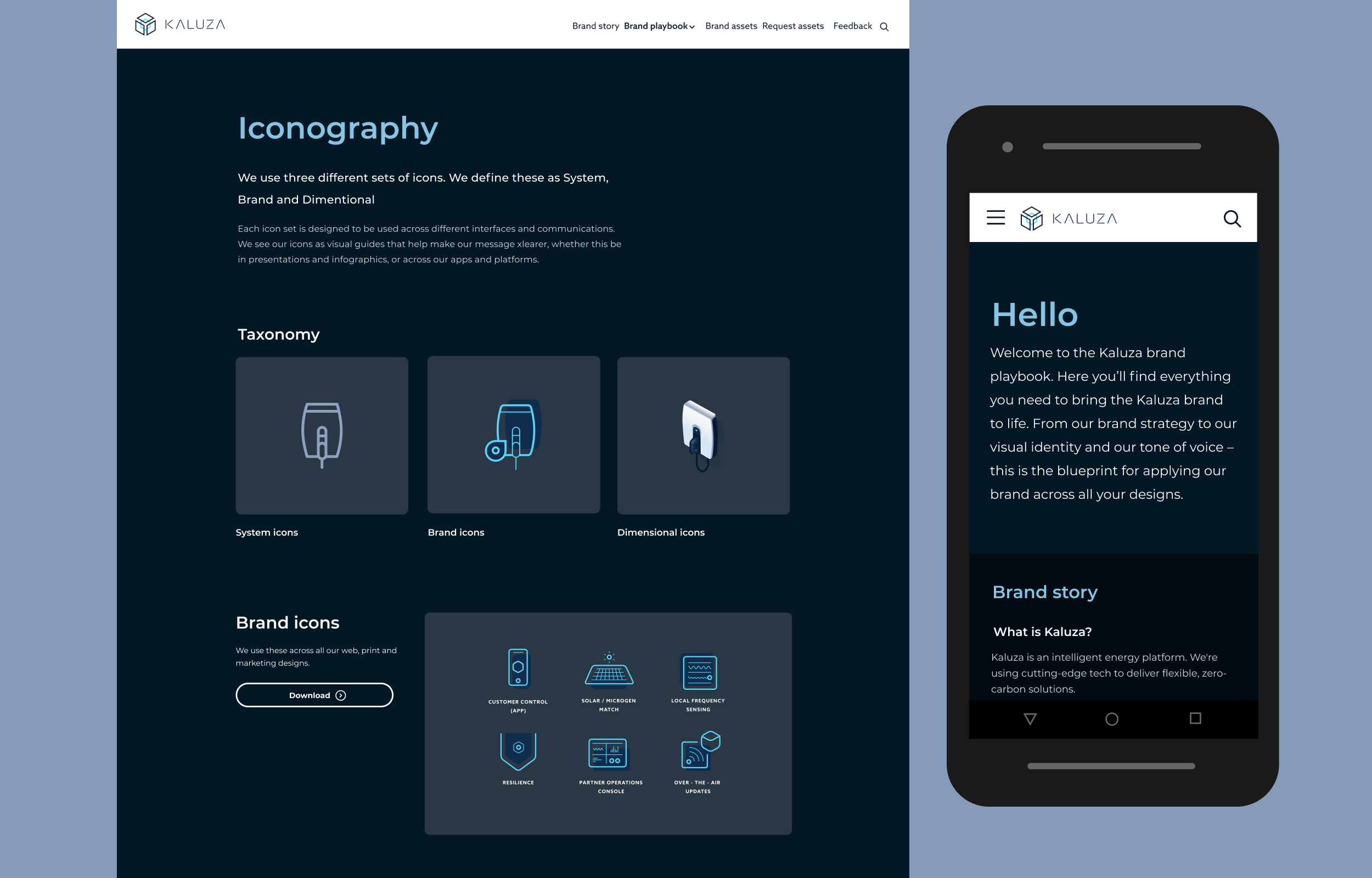
With no funding or dedicated resources to build the playbook, I developed the site using google sites. As an organisation we use google for file sharing - the site was free to build, host and would give everyone in the team the autonomy to update the site at any time. By adding our own css styles we were able to create a brand playbook that is unique to Kaluza.
Since its launch in 2021 the brand playbook has supported over 500 users, 66% of which return to the site regularly. The site is used internally by our platform and marketing teams and externally by agencies and partners.
